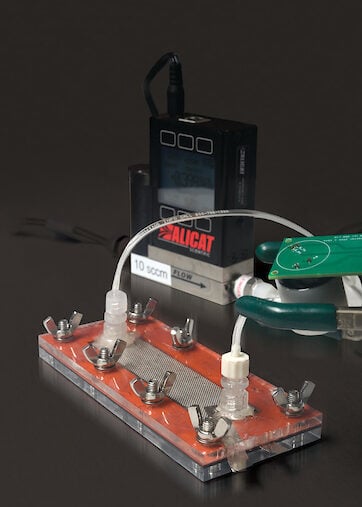Researchers at Johns Hopkins Engineering have developed a benchtop prototype device designed to capture carbon dioxide from the atmosphere by harnessing the unique interactions between electricity and indigo—the iconic, inexpensive, and readily available dye used in blue jeans. The team’s innovative design, described in 
Advanced Functional Materials, presents a cost-efficient alternative to traditional carbon capture methods. Working in a simulated environment resembling a factory’s exhaust stream, the researchers showed promising results. “Our tests showed that this indigo-based system operates at 80% of the maximum theoretical efficiency,” explains Krish Jayarapu, a third-year student in chemical and biomolecular engineering, who worked with Assistant Professor Yayuan Liu on the prototype.
“Indigo’s chemical properties allow it to latch onto carbon dioxide when electricity is applied and then release it when the current is reversed.”
The new prototype device’s electrical process achieves optimal carbon capture efficiency while using low-cost materials and a modular design, making it scalable for both small devices and large industrial applications.




